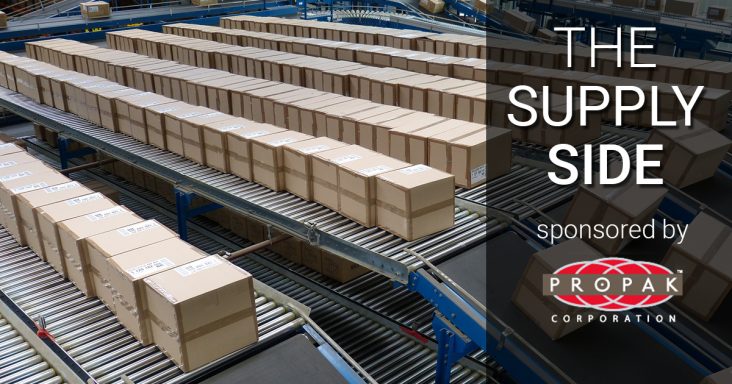The Supply Side: Retailers battle for beauty sales in 2021
by October 16, 2021 9:15 am 1,668 views

Beauty is the newest battleground for market share among top retailers who have each doubled-down their efforts to glean more sales in this higher-margin category this fall. The NPD Group reports that U.S. sales of prestige beauty products dropped 17% last year but recovered about 11% of that loss in the first half of 2021.
“We see two stories unfold for beauty – one of stagnation (department stores) and the other of recovery,” said Larissa Jensen, a beauty industry adviser at NPD.
She said lipstick sales have improved since mask mandates were repealed, and there is a rise in skincare and fragrance sales as consumers are treating themselves to little luxuries. She said those products are mainly purchased online and not at department store cosmetic counters like in past years.
Many market watchers say the time is ripe to try and grow market share in the beauty category, a $42 billion business in the U.S. alone. Walmart said it is “leaning hard into beauty” and recently added more than 40 new labels to the category and expanding its emphasis on serving people of color.
Musab Balbale, merchandising vice president at Walmart U.S. beauty, said the category is changing as the pandemic created slower sales last year with people working from home. He said beauty product sales are up in 2021, with consumers wanting whiter teeth and lipstick as they took off masks. Balbale also said adding more products is not an automatic fix, as the retailer must make beauty more cohesive with improved store experience using interactive digital displays.
“There’s much more digital engagement in the stores. It’s an experience that’s able to delight customers while it delivers replenishment and ease of shopping. There’s a lot of work underway exploring how that might be amplified,” Balbale said in a recent podcast.
Balbale has worked within consumer retail for the past 20 years and recently transitioned from wellness to beauty at Walmart. He said that Walmart’s beauty team has nearly doubled the number of new beauty brands within the past year. Walmart has also begun to step into the popular worlds of TikTok and livestream shopping, hosting its first live beauty shopping event through TikTok in March, bringing more Gen Z (ages under 24) consumers into the Walmart fold.
Walmart also recently partnered with Uoma by Sharon C, a Black-owned, sustainable beauty brand from Sharon Chuter that is inspired by Gen Z. Balbale said the brand exemplifies Walmart’s push to “change how we engage the beauty community” through “diversity, inclusivity, accessibility [and] sustainability.”
“The challenge in beauty is how do we bring her from other areas of the store,” Balbale said. “We know she’s shopping for groceries every week. Increasingly she’s looking at fashion and home and areas where Walmart is making strides. The mission is to make it simpler to buy what she’s buying in the beauty space and also give her things to discover on her weekly shopping trip.”
Amazon recently announced an October beauty event it calls Holiday Beauty Haul that will run from Oct. 4- 25. Amazon reportedly hopes to use the event to help drive traffic to other holiday promotions it will host later in the season.
“We want to draw customers back to Amazon during Black Friday week but also long term with additional marketing levers,” Amazon said in a slide deck it sent to beauty brands and consultants. “This is a unique opportunity for selected brands to reach both more shoppers and new customers.”
Amazon has sold beauty products since 2000, starting with mass-market products and gradually adding higher-priced brands. In recent years, the company introduced digital services that used augmented reality to allow consumers to try lipstick before virtually purchasing it.
The new beauty promotion event will include fragrance, men’s grooming, winter skincare products and cosmetics. Amazon said beauty is one of the fastest-growing categories, and the company is also looking to reinvent the experience of buying beauty products online.
In September, Target announced a partnership with beauty giant Ulta that will put more than 100 Ulta mini-stores within select Target locations as well as the retailer’s website. In August, the partners said they could see the venture growing to 800 stores over the next few years. The venture is a shop-in-shop concept that Target has done well in the past. The retailer will take about 1,000 square feet of space for the expanded beauty section with its stores, and there will also be specialized displays, discovery zones and featured trending products. The stores will also have Ulta Beauty-trained employees ready to lend their expertise via online chats.
“Ulta Beauty at Target reflects further evolution in our omnichannel strategy, rooted in unlocking the potential of our physical and digital footprints, creating more seamless shopping opportunities for our loyal guests and continuing to lead the beauty industry,” said Mary Dillon, CEO of Ulta Beauty.
Target CEO Brian Cornell said the partnership is excellent for Target customers because they will have access to more than 25,000 beauty products from 500 suppliers and deep competence and expertise from within the beauty industry.
Dana Telsey, CEO of the Telsey Advisory Group, said everyone is ready to get back to celebrating special occasions like missed birthdays, graduations and anniversaries, and there is a need for makeup. She said beauty is also a high-margin category compared to grocery, and it’s no surprise to see Walmart and Target expanding beauty offerings. She said consumers also tend to be loyal to their favorite beauty brands, and the products can also drive traffic in stores and online, which retailers seek.
Editor’s note: The Supply Side section of Talk Business & Politics focuses on the companies, organizations, issues and individuals engaged in providing products and services to retailers. The Supply Side is managed by Talk Business & Politics and sponsored by Propak Logistics.
